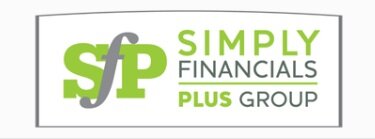Over the last three years, more and more businesses are embracing virtual work.
Working virtually eliminates the need for paper and provides convenience, flexibility, and efficiency.
However, making the switch can feel like a daunting task. Exactly how are you supposed to get rid of paper and fully convert your office into a virtual space?
The answer: create a plan and give yourself plenty of time to make the shift.
What Does a Paperless Office Look Like?
A paperless office relies heavily on automated systems and processes.
Because these systems and processes can be accessed wherever and whenever you have an internet connection, paperless processes bring many benefits to the table.
Efficiency
You’ll notice fewer errors and save time with automatic tracking and updating.
Improved communication
With real-time data, you and your staff can see changes without worrying about which version is up-to-date.
Security
Papers no longer have to be stored in a filing cabinet or shredded before the wrong set of eyes lands on them. You have an electronic storage system that keeps things safe.
Savings
With efficiency comes more time and as you know, time is money. You’ll also save on printing and distribution costs - two expenses that really add up.
Tips for Designing a Paperless Office
Implementing an entirely paperless office takes time. We know from experience.
At SIMPLY Financials PLUS, we’ve gone entirely virtual with the help of a plan and several key tools.
For cloud storage, we use Google Drive, for quick and easy communication we use Slack, and for software integration and a smooth workflow we use Zapier - just to name a few.
We’ve also automated nearly every aspect of our financial processes, and recommend all of our clients do the same.
Here are a few things to keep in mind as you transition to a paperless office:
Automate Your Processes - Specifically Your Financial Processes
Automating your processes is the first step towards getting rid of paper. It converts everything to a virtual format, giving you the ability to access your information from anywhere.
We mentioned a few tools in the previous section that are helpful for automating workflows and improving communication, but these are just the tip of the iceberg.
Where you really start to see results is when you begin automating your financial processes.
Nearly everything in your financial system can be automated.
Bookkeeping - QuickBooks Online
With QBO you can track income and expenses effortlessly on an easy-to-use dashboard. This eliminates the need for manual entry and keeps your finances in one place. QBO also offers invoicing services so you can get paid up to 2X faster. Additionally, most popular automation tools integrate with QBO, merging your information with just a click of a button.
Billing/Payments - Bill.com or Melio
Collecting, making, and recording payments is time-consuming and tedious. However, tools like Bill.com and Melio streamline the process. Both tools allow you to easily create, send, receive, and sync your accounts payable. They also allow you to pay your bills with your preferred method and sync the payment info to your accounting system.
Receipt Capture - Dext
Dext easily captures your receipts, extracts the important information, saves the data, and then sorts it to wherever the information needs to go. Aside from snapping a pic of your receipts, you don’t have to do a thing.
With the right tech stack, there will be very little, if any, manual entry required on your end. Because of this, you’ll notice a sharp increase in efficiency and accuracy within your accounting system.
Make Sure Your Employees are on Board
As we’ve discussed, going paperless means implementing new technologies. This can be a tricky shift for you and your team.
Before you implement these changes, outline the benefits to your team. You need them to be on board with the new processes for them to be successful.
You should also take time to explain to your team what role they will play with the new systems. This takes out the guesswork.
To help them understand the new tools and their role, create how-to or training videos. Some tools will have these made for you, but if not, give Loom a try. You can easily create and save videos for your team.
Don’t Expect a Quick Shift
It takes time to fully implement a paperless office.
At the beginning of the transition, you’ll likely have a lot of info to transfer into a digital format. This can be tedious but will be well worth the work.
Be patient and make sure you allow yourself and your team enough time to adjust to the changes and learn new systems and processes.
Consult with an Experienced Accountant
Considering the bulk of transferring to a paperless office involves automating your financial processes, work with an experienced accountant, like SIMPLY Financials PLUS.
We operate as a paperless business and rely on automation to manage our clients’ finances.
When you work with us, we will help you build a financial tech stack that works for you, guide you through the transition and implementation process, and be there to manage your financials along the way.
Let us help you make the transition to a paperless office! Contact us today!
